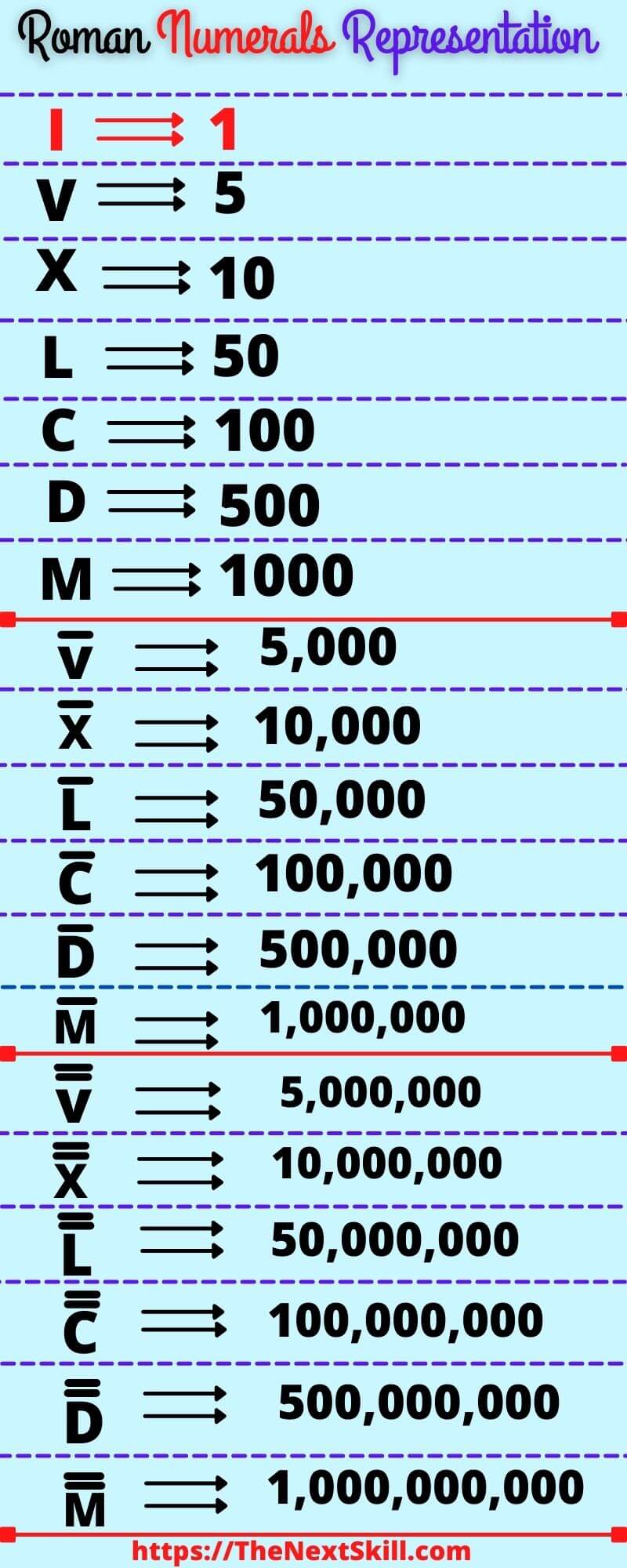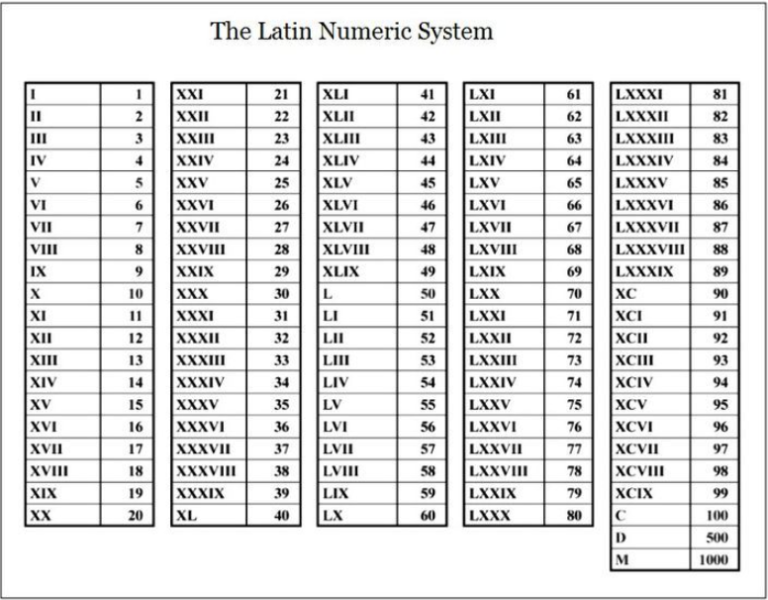
The Vinculum method was another method used to express large numbers in the Roman system. Given below is a table of large numbers expressed using the apostrophus method. In this system, an extra Ↄ denoted 500 and multiple extra Ↄ denoted 5,000, 50,000 etc. Apostrophus The astrophus method was used to 500s and 1000s where 500 was expressed as IↃ and 1000 was expressed as CIↃ. We will look at the two most common ways used, namely the Apostrophus and the Vinculum method. It was only much later that the Romans inculcated representations for larger values in their number systems and had multiple ways they achieved the same. There were no representations for say 10,000, 20,000, 50,000 or a million The largest number they represented was 3,999 using MMMCMXCIX. The Romans did not have any representation for really large numerals because they believed they had no use for it. Similarly, the Rule of Addition states that if a symbol of lower value is to the right of a symbol of higher value, we add the smaller value to the higher valueįor example XXVII = X + X + V + I + I = 10 + 10 + 5 + 1 + 1 = 27 Really Big Roman Numbers The differences can also be noted between the numbers 1 to 10 itself.įor example, 4 is written as 5 - 1 = IV and not I + I + I + I = IIII 3.


Meaning, in a Roman Numeral, whenever the value of the symbol on the right is greater than the value of the symbol on the left, the value on the left is subtracted from the value on the rightįor example consider the Roman Numeral XLIV

Instead of expressing a symbol four times, they expressed the values as a subtraction of the value on the left from the value on the right. Rule of Subtractionīecause of the constraints of the rules of repetition, the Romans expressed certain values differently. Hence, you cannot write VV for 10 but write X instead 2. That is, you cannot repeat the symbols V, L and D. The rule also states that only the symbols I,X,M and C can be repeated. Hence, we write IV instead of IIII to express the value 4 The rule states that the symbols I,X,M and C can be repeated a maximum of three times only and not more. The rule of repetition states that the symbols I,X,M and C can be repeated twice or a maximum of thrice to express a value.įor example XX can be used to express 20 (10 + 10) or CCII = 202 (100 + 100 + 1 + 1) Although, all numbers are an expression of these following 7 symbols or alphabets, the Romans used three rules to express all other numbers besides them.ģ. While dealing with the Roman Numbering system, we need to keep in the mind that the rules followed by the Roman numbering system is different from the modern numbering system. Let us look at the chart of the Roman Numbers first and then understand how these values are achieved Roman Numerals 1 to 100 1 SymbolĮvery value inbetween these values or subsequent to these are expressed as a combination of the above letters only.

Just like the modern number system makes use of 0 to 9 to express every value, the Roman Number system made use of just 7 alphabets as symbols to express every single value. Roman numerals may not be used as widely as they were when the Roman empire was at its peak but it is still in usage today. The ancient Roman numbers system made use of combinations of letters from the Latin alphabet to express numbers. Ancient Romans used a number system which is different from the modern number system.


 0 kommentar(er)
0 kommentar(er)
